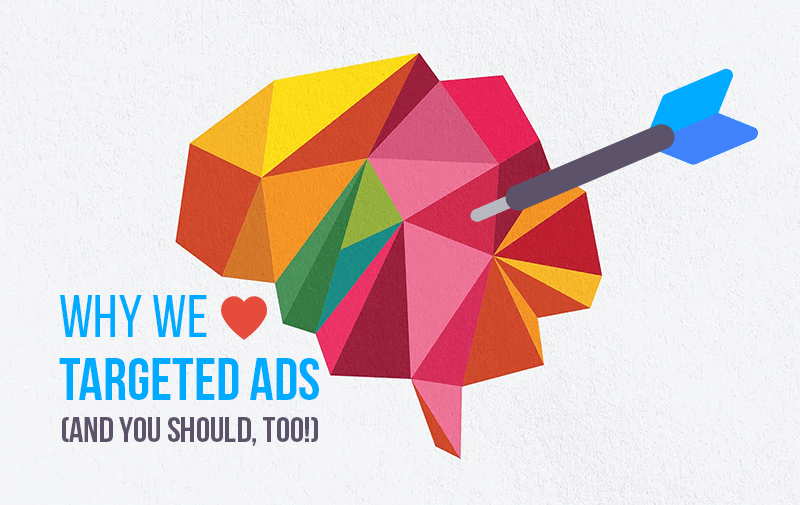Many of the world’s leading companies today are capitalizing on behavioral marketing to reach consumers via targeted ads. Also known as behavioral targeting, it is the practice of targeting online audiences based on their behaviors, actions, and interests, as opposed to demographics or other less personalized metrics. It profiles the behavior of online users to determine which ads those users will see next. This gives businesses insight into the habits and desires of consumers, allowing for a deeper level of ad customization.
Data points amass as one clicks his/her way from one site to another, taking note of what one buys, reads and searches. As time progresses, more data is being collected. Given the emphasis on social media, a platform which gives its users a voice to share their thoughts, brands are also listening to these voices and using them as information to craft more targeted and personalized ads. All of these data that has been collected has huge implications for the Internet of the future.
Stand Out from the Sea of Advertisements

Consumers are always avoiding mass media advertising. Television breaks would be the time to get a drink, make a snack, or even go for a toilet break; magazine readers could turn the advertisement page, and newspapers could have the entire sections tossed aside by their readers. Since the emergence of advertising, consumers have been bombarded by ads every day and trying to avoid them as much as possible.
Internet advertising is no different, and it is an orgy of choice. There are tens of thousands of publisher sites on which an ad could be placed, and dozens of different ad sizes and formats. There are far too many ads and product placements cluttering up the internet, in some cases, users automatically filter out these advertisements. Therefore, brands are pressed to find even more innovative and aggressive ways to cut through the “ad clutter” or “ad fatigue” of modern life.
Behavioral marketing can help businesses to increase the click-through and conversion rates, due to its highly customized and targeted nature. Since the advent of new online channels, brands have been struggling with identifying consumers and tracking behaviors. They want to guarantee that the ads can influence or touch the consumers at their micro-moments. For instance, brands want to target their ads to the exact people they would like to connect with. Targeting ads help them to find the right customers across multiple devices, including desktop, mobile, and tablets and deliver relevant messages to specific people. For consumers, on the other hand, they receive ads that are relevant to them and in some cases, micro-moments when they are about to make a buying decision. These ads help them in their research process and enable them to make informed decisions.
Deliver Higher ROI and Customer Loyalty

Companies that have been able to target consumers based on their behavior report many benefits, including higher return on investment and increased revenues. Return on investment (also known as ROI) measures the ratio of the profits to the advertising costs. As the Internet has become an indispensable part of the daily lives of many, there is a fundamental change in the way people consume media. Micro-moments occur every day when people reflexively turn to a device to act on a need to learn, do, discover, watch, or buy something. These are intent-rich windows when decisions are often made and preferences shaped. In these moments, consumers’ expectations are the highest.
Targeting ads allow brands to get the most value from their ads spending by reaching only the people that matter to them. This allows them to focus their offers and marketing spend on specific customers, and include the right marketing messages. By serving ads at the crucial micro-moments and through specific targeting, brands can ensure a better return on investment and increased customer loyalty.
Influence Self-Perception and Boost Interest

New research has discovered that there may be another, psychological response triggered by behavioral marketing which could boost the effectiveness of targeted ads.
In this study published in the Journal of Consumer Research, researchers have found that besides allowing brands to reach a more targeted audience, behavioral marketing also influences the users’ perception of themselves and make them feel like they already have traits implied by the ads. In another word, it impacts the behavior of consumers including purchase intentions for the advertised product and other behaviors related to that product, thus making them more likely to convert.
In a way, it is a whole new factor to consider as it is a new strategy to boost the marketing outreach and influence the consumers’ perception. This also suggests that brands with strong personalities, in general, might benefit the most from behavioral targeting.
Conclusion
In short, behavioral targeting is not perfect, but it has immense potential to change the way people consume and search for information online. And this potential expands every day as technology advances with more data being collected and analyzed. As you are reading this, tonnes of data has already been collected from you and you might have already been targeted!


![The Art of Creating Better Content [Infographic]](https://www.techedt.com/wp-content/uploads/2016/05/Better-Content.jpg)


